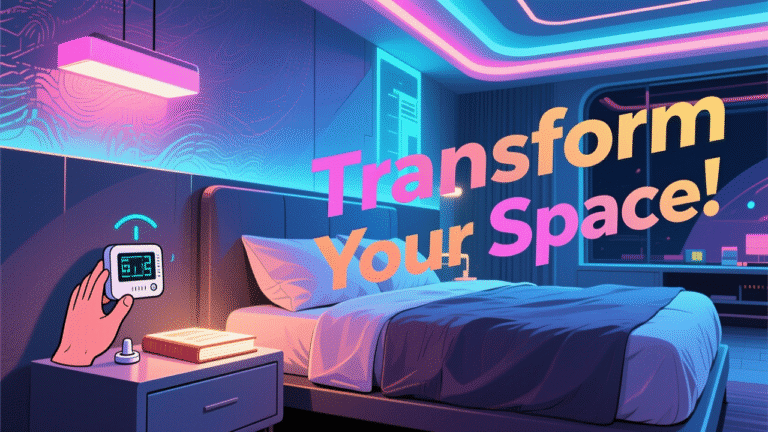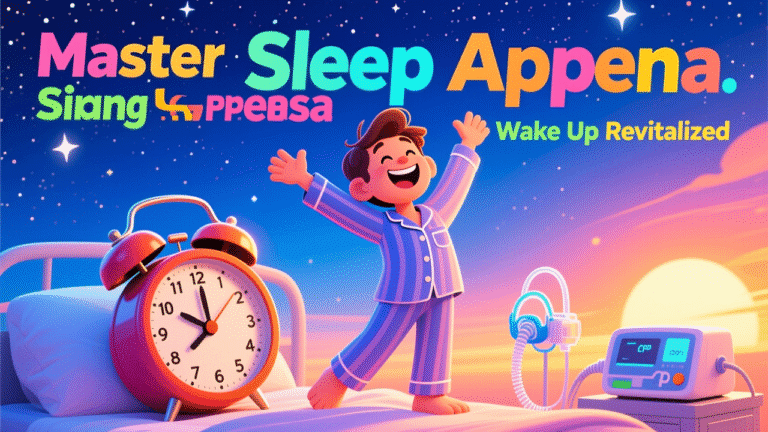A sleep apnea machine, often referred to as a CPAP (Continuous Positive Airway Pressure) machine, treats obstructive sleep apnea (OSA) by keeping airways open and preventing interruptions in breathing during sleep. These devices have transformed sleep medicine, providing millions with restorative sleep and reducing health risks associated with untreated sleep apnea.
What Is Sleep Apnea?
Sleep apnea is a chronic disorder characterized by repeated breathing interruptions due to airway blockages, typically caused by the relaxation of throat tissues during sleep. Those affected may gasp, choke, or snore loudly, waking unrested. The most common form, obstructive sleep apnea (OSA), can lead to high blood pressure, heart disease, diabetes, stroke, depression, daytime fatigue, accidents, and lower quality of life.
Now that we’ve covered the basics of sleep apnea, let’s dive into what a sleep apnea machine actually is.
A sleep apnea machine, most commonly a CPAP, delivers a steady stream of pressurized air through a mask worn during sleep. The airflow keeps the airway open, preventing breathing pauses caused by airway collapse. Its main components include:
- A hose to channel the air
- An air filter
- A mask that fits securely on the face
- Some models include a heated humidifier to prevent dryness.
With an understanding of the machine’s parts, here’s how a CPAP device works during use.
The machine draws in and filters room air, pressurizes it, and sends it through the hose into the mask. This airflow keeps the user’s airway unblocked and stable throughout the night, preventing apneas and snoring for deep, uninterrupted sleep.
Other Types of PAP Machines
While CPAP is the standard for most cases, some may need alternatives:
- APAP (Auto-Adjusting Positive Airway Pressure): This type of machine automatically adjusts the air pressure level based on the detected airway resistance during sleep.
- BiPAP (Bilevel Positive Airway Pressure): This machine provides two distinct pressure levels—higher pressure for inhalation and lower pressure for exhalation. It may be preferable for individuals with certain respiratory or neuromuscular conditions.
Comparison Table: PAP Machines
| CPAP |
Constant |
Most OSA patients |
Simplicity, reliability
|
| APAP |
Auto-adjusts |
Variable needs, frequent position changes |
Enhanced comfort, adaptable
|
| BiPAP |
2 levels |
Complex cases, COPD, central sleep apnea |
Easier exhalation, more settings
|
Benefits of Using a Sleep Apnea Machine
- Restored, Deep Sleep: CPAP therapy allows restorative sleep and helps reduce fatigue.
- Proper treatment lowers health risks like hypertension, heart attack, and stroke linked to untreated OSA.
- Users often experience a better mood, increased focus, and improved productivity during the day.
- Steady airflow usually eliminates snoring, improving sleep for users and their partners.
Potential Challenges with CPAP Therapy
CPAP has improved many lives, but some users face challenges:
- Initial Discomfort: Some individuals may experience irritation from the mask or claustrophobia at first.
- Dryness and Congestion: Unhumidified air can cause dryness, but most machines now come equipped with humidifiers.
- Noise and Adjustment: Older models can be noisy, but newer devices are quieter and more comfortable.
Most issues improve with use, and equipment can be adjusted or replaced for comfort.
Tips for Success with a Sleep Apnea Machine
- Ensure a proper mask fit. A mask that’s too tight or too loose can cause leaks and disrupt sleep.
- Clean masks, hoses, and humidifiers regularly to prevent infections and maintain air quality.
- Use the machine every night, including during naps, to maintain optimal health benefits.
- Consult a sleep specialist or technician to resolve issues with pressure, dryness, or the type of mask you are using.

Commonly Asked Questions
Do All Sleep Apnea Machines Require a Prescription?
Yes. A licensed provider must diagnose your sleep disorder and prescribe the device and settings.
Can the Machine Be Used for Travel?
Yes. Travel-sized machines are available, with compact designs and battery options for travel.
How Much Does a Sleep Apnea Machine Cost?
Pricing varies widely by features, technology, and purchase method. Many insurance plans cover CPAP, often requiring sleep studies and a formal diagnosis.
Alternatives to Sleep Apnea Machines
CPAP is considered the gold standard for OSA, but some alternatives exist. Lifestyle changes, such as weight loss, reduced alcohol consumption, or adjustments to sleeping position, may help with mild cases.
- Dental appliances, such as oral devices that reposition the jaw or tongue, can be effective for some people.
- Surgery: In select cases, surgical interventions to remove airway obstructions may be considered.
- Nerve stimulation devices: These are newer treatments, such as hypoglossal nerve stimulators, that help control the muscles of the tongue and airway. They are available for specific, complex cases. Consult a sleep specialist to determine the most suitable treatment for your condition.
The Importance of Treating Sleep Apnea. Untreated sleep apnea can be life-threatening. Repeated blood oxygen drops strain the heart, raise blood pressure, and increase the risk of arrhythmia, heart disease, and sudden death. Persistent fatigue resulting from poor sleep can lower the quality of life and increase the risk of serious accidents.
Real-Life Success with CPAP: TheraStudies and Testimonials Confirm the Transformative Impact of CPAP. Many users report relief from years of fatigue, headaches, forgetfulness, and mood swings within weeks of consistent use. Spouses and partners benefit too, once snoring and gasping stop.
Final Thoughts
A
sleep apnea machine is a cornerstone of modern sleep medicine, helping individuals restore healthy sleep, protect their cardiovascular health, and experience a life-changing boost in energy when used consistently. Navigating the initial adjustment is often the most challenging part, but with support, education, and the right equipment, individuals with sleep apnea can look forward to brighter mornings and longer, healthier lives. Whether you are new to therapy or seeking a refresher, understanding the role of sleep apnea machines is crucial to achieving better sleep and overall well-being. If you experience persistent snoring, fatigue, or other symptoms of sleep apnea, consult a healthcare provider. It may be the start of a restorative journey.







